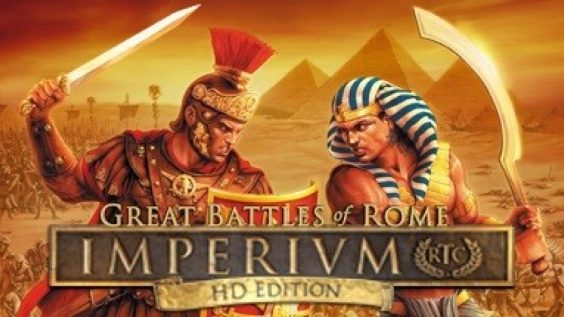
A brief guide expaining how to play Imperivm RTC, including a game basic overview, an explaination of the game mechanics, and an guide to each of the eight civilizations.
I’m writing this because most of the guides you can find online are either in Spanish or Italian.
Hopefully, new players will get to know this game, and maybe they won’t speak Spanish nor Italian, so I’m writing this guide to help them figure out the main mechanics of this wonderful game.
Resources
There are only two resources in Imperivm: Gold and Food. They can be stored in structures, or transported in wagons.
Gold is used to train units and adress orders. If you want to create a good army, you’ll need this. Gold is automatically gathered in Strongholds (see the structures section of this guide), and it can be found in neutral forts. Some forts can also increase the amount of gold you can acquire.
Food is needed for your units to survive. Whether they’re in a building or they’re marching, units will starve if they have no food. Because of this, it is very important to send a wagon of food with your units if they’re going to travel a great distance, and to only send units in a building if there’s enough food to mantain them. Food is automatically produced in villages.
Structures
Structures (also called buildings) cannot be built in Imperivm, they will be generated with the map and their layout cannot change. They can only change owner if they are captured (as explained later). All structures share the same statistics: Loyalty and HP.
Loyalty, shown as a blue flag, will increase over time until it reaches the valie of 100. It can only lower when enemy units are ordered to “capture” the building. They will start waving their hands and the structure’s loyalty will start to decrease. When it reaches 0, the structure will be owned by the player whose units captured it.
HP are the Hit Points. A building cannot be destroyed, but it will be unusable and all the units inside will be killed if the structure’s HP drops below a certain amount.
Many structures can house units: in this case, the units will be shown in the top right corner of the HUD when the structure is selected. Actions that you can perform in a structure (also called orders) are shown in the bottom center.
In this image (click on it to enlarge it), a Gold Fort (see list of structures) is selected, allowing you to see the structure UI. I have highlighted the different sections with red rectangles:
- The blue flag, with the value 100, is loyalty
- Next to loyalty are gold and food (see resources)
- Then we have HP
- On the right half of the top section are shown units (the numbers below their portrait are their number, the green bars are their HP)
- On the bottom section of the HUD you can see all the orders you can address in this structure
List of structures
There are many types of structure in Imperivm:
Strongholds
Strongholds are the most important structure: every player starts with one of these, and when a player loses all his strongholds, they’ll be defeated. This means conquering all the enemy strongholds is the goal of an Imperivm match.
A stronghold generates gold depending on its population value (which is also used to train units) and it can also store food. It can train units, and adress orders (orders are what other games call technologies or upgrades)
Every stronghold contains 6 buildings surrounded by walls. On the top of the walls sentries will attack all enemies who approach the fortress, and spot hidden units. There are a few gates in the walls, which can be destroyed by siege machinery, allowing enemy units to enter the city.
The 6 buildings are:
Town Hall: Also called Forum. It accommodates units, and it has some basic orders. If it is captured by an enemy, the whole fortress will be captured.
Barracks: It is used to train units, and has an order that increases units training speed up to two or three times depending on the civilization (see civilizations).
Blacksmith: It has orders to unlock and upgrade units, as well as increasing sentries level.
Temple: It trains priests (druids, shamans, etc.) and it has some order related to them, and for some civilizations, some orders that buff units.
Arena/temple: It’s used to train heroes (see heroes) and it has orders that buff units.
Tavern: It has utility orders, often realted to exploration and economy, or more rarely combat.
Villages
Villages are another key element in Imperivm because they produce food, and every player starts with one village next to their stronghold. Villages also have a population value (just like strongholds) that increases the food generation rate. Every village has two main orders:
– they can establish a supply route (also called tribute), that will periodically create food caravans that will travel to the selected stronghold or fort, increasing their food value.
– they can convert 5 population to five controllable villagers, that will increase the pupulation of a stronghold by 5 if they enter its forum.
If you find a neutral village, it will be instantly captured when your units approach it.
Forts / Outposts
Forts are very important to mantain control over a region. They can accommodate units (allowing you to have your armies all over your territory), store food and gold. At the beginning of the match, they will be neutral (they will attack every player) and you will need to kill all the units in it to capture it. Every fort has an order to establish a supply route (that will send all gold and food to the other building). There are different kinds of fort:
Gold Fort: When it has more than 2000 gold in it, it will start increasing that amount. It is extremely helpful to gain more gold, and if you establish a supply route its gold value will never drop below 0. This means they can constantly produce gold and automatically send it to your stronghold.
Trade post: It trades food for gold at a rate of 2/1. It’s useful but only if you have a lot of food to waste.
Military post: It will increase the level (see units) of all the units and heroes in it, up to 8. It can be good to send newly created units there.
Garrison: It will slowly convert all the villagers in it to mace men (a carthaginian unit).
Guard Post: a small camp that can store gold, but not food or units, and has sentries guarding the area. No warriors will defend this outpost when it is neutral.
Shipyards
Allows you to establish naval supply routes across the seas, and to train war ships, that can attack buildings and units. When they are neutral, they will be instantly captured as your units approach it.
Altars (Stonehenge)
They are used to cast powerful spells that will affect all players, including you. It can be extremely useful in some situations, but it can also have some downsides, so pay attention.
Teuton tents
You will need to fight 20 teutonic knights and 20 teutonic archers in order to capture this building, but once you’ve done it, you will be rewarded with 12 friendly teutonic units (6 knights and 6 archers), very useful to explore the map. If you send food in it, more units will be recruited.
Caves
Each cave is linked to another one. When your units enter a cave, they will be teleported to the linked one. They can be useful to travel across great distances, to launch surprise attacks, and to explore distant lands. BUT you need to guard the caves in your territory, or enemies might use them to capture your forts and get away with the loot, or even to directly attack your stronghold
Item holders
They contain an item (also called object) that will buff its bearer’s stats. It can be picked up by any unit, and the same item will be regenerated some time later.
Ruins
Ruins contain extremely powerful items, that only heroes can pick up. If you send a hero of the right level (must be above the level shown in the top left when you select the cave) in a ruin, he will come back with the item, but its HP will be very low. Because of this, it’s not wise to send a hero in a cave if there are enemies around. Ruins items regenerate every 10 minutes, but the minimum hero level will be increased by 4 and the item will be different.
Example
On this randomly generated map (you can see a larger version if you click on it), i’ve circled every type of structure in a different color:
red = strongholds
yellow = forts/outposts
green = villages
violet = altars
blue = ports
grey = caves
As you can see, some stronghold and villages (for example the one in the bottom left corner) have a coloured border: this means they are owned by a player (either human or AI), while all the structures with a grey border are neutral. As you can see, some structures, like altars, are much rarer than others. Also, there is no way to see which pairs of caves are linked, until you send a unit in them.
As you can see, some players have a drastically different starting position, which means they’ll need to adopt different strategies.
The blue player (the one on the island), for example, will have a hard time conquering fort, because they’ll have to find some on the mainland, near other players’ zone, but their starting position is also quite easy to defend compared to the others, and he can reach any area on the map in a fairly small amount of time, being at the center of it.
Units
This section covers the different kinds of units in the game, as well as some strategy tips related to them. First off, there is no rock-paper-scissors mechanic in Imperivm, if a unit is good against another unit its because of it’s statistics and skills, not because of a fixed modifier.
Units have five main stats: Level (increases overall effectiveness); Hit Points; Damage; Armor; and Stamina (needed to use most skills).
Every unit has one or more special skills, and that’s where the RPG mechanics come in play. This guide won’t cover a full list of stats and skills, but in the civilizations section there is a quick overview of every unit. This section is a list of the different unit tyipes in the game:
Melee infantry
They’re basic infatry units, they have medium HP rarely high armor, but they deal a high amount of damage. They are versatile and can be used in many situations. There isn’t much to say about them, except that the best ones are those with good damage-related skills, such as penetration (allows them to bypass enemies’ defense and deflection), bleeding attack (increases the damage dealt depending on the enemy’s hit points) and many more.
Tank infantry
They’re frontline warriors focused on slowing down enemy melee fighters, allowing your ranged units to kill them. They’re usually slow, and have medium to high HP, very high armor, or a good defensive skill, and they rarely deal much damage. This units must be placed in front of the others to be effective. When looking for a good tank, you want high armor, high hp, but most importantly a good defensive ability, such as deflection (getting hit decreases stamina instead of HP) and parry (just like deflection, but the unit cannot deal damage. Hitting an opponent increases stamina).
Archery
They’re the warriors who attack enemies at range. They have a pretty decent attack, often increased by powerful skills, but they have low HP and armor. Ranged fighters are usually the damage dealers in an army, so make sure to protect them with tanks. There are many skills that can be good for archery units, as long as they’re attack skills. Defensive skills on archery are useless, because their real defence are tanky units.
Cavalry
They’re fast but weak warriors. Their speed allows them to run away from battles, to capture enemy forts before their armies can react, to bypass enemy tanks and attack the archers directly, and, of course, to explore the map fast. There is one skill that makes a horseman a great unit, and it’s charge. It only activates when the unit didn’t attack for some time, and it increases attack by 5 times. This skill is neutralized by units with parry/deflection (see tank infatry).
Priests
They are trained in the temple. They cannot fight, but they have useful skills, such as healing, making people invisible, increasing their level, lowering enemies’ stamina, and more. It is wise to only send them to battle with other units if their ability can be of use during a fight, especially if they can heal friends or remove stamina from enemies. Priests are also the only units who can perform spells at altars.
Special
Special units are trained in the arena/temple, and have a maximum number. They’re way stronger than normal units, but usually they cannot be attached to heroes.
Heroes
They are, by far, the most important kind of units. They have very high stats, but their main feature is the ability to lead armies. You can attach up to 50 units to a hero, and then controlling the hero will move the whole army. It is highly recommended to never send units to battle if they’re not attached to a hero. Heroes also have five skills, that can be upgraded each time the hero levels up. These skills usually affect the whole army, making it really important to choose which ones to upgrade wisely. You can also select a formation for the army, which is useful to protect weaker units, increase the area covered by archery’s range, etc. Every formation also grants a fixed bonus, but only when units are standing still.
Ships
They can carry units to other islands, and they can attack other ships and units that are close to the shore. You do not want your ship to be damaged while it’s carrying units.
Caravans
They carry food or gold from one place to another. They have a loyalty stat (like structures) and can be captured. They are surprisingly useful to explore the map. While they’re very slow, they won’t suffer from hunger, and they won’t ne attacked by neutral units (enemy units will, though).
Units level and formations
This section covers some advanced tips about units management. If you just want a quick overview of the game, you can skip this part.
Units levels
Units, as said earlier in this guide, have a level that increases their overall performance. But how does it work? It’s quite compicated.
How to level up
Units level up when they fight. If you hover with the mouse on a unit’s portrait, you will see how many enemies they’ve killed, and how many more they need to kill in order to level up. Animals can also increase units’ experience. Apart form fighting, units can level up when they’re sent in a military post (see structures), and almost every civilization has at least one order that increases the level, or the xp gaining rate. Religious units (druids, enchantresses, etc) can “learn” form units with a higher level, and the Iberian priestess of Astarte can even increase other units’ level.
Finally, every unit attached to a hero gets some bonus experience; for example, if you assign a lv1 unit to a lv10 hero, the unit will become level 6.
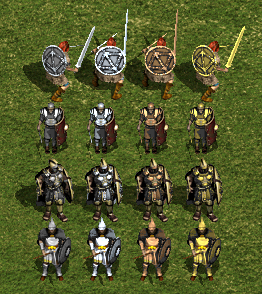
The most obvious change is the skin. Units with higher level will have shinier weaponry, as seen in the picture to the right:
lv1 – lv5 = generic metal weapons
lv6 – lv11 = iron weapons
lv12 – lv18 = bronze weapons
lv18+ = golden weapons
But of course there are other changes, that actually matter in a fight: when a unit attacks a unit with lower level, his damage and armor ares increased by 4% times the difference between the levels. If that difference is higher than 10, each level will only grant a 2% damage bonus.
Here’s a practical example:
two valkyries (damage = 30, armor = 12) are fighting each other. One of them is lv6, the other one is lv1, the difference is 5, meaning the lv6 one will have a 20% buff. When the lv6 valkyrie hits, she will deal 21 damage, because 30-12 = 18, then the levels bonus will increase it by 3 (which is the 20% of 18 rounded). When the lv1 valkyrie hits, she will only deal 14 damage, because the other one’s armor will become 16 thanks to the 20% bonus.
Formations
In the previous section, i mentioned that it is important to assign your units to a hero, but the hero’s special abilities aren’t the only reason for that. When your units are attached to a hero, they will create a formation. You can choose between different formations with different bonuses. In the picture, you can see the “cavalry core” formation, which is very good for archery. Sadly, the formation bonus will only apply if the units are holding the position. Order them to move or to attack and the bonus will not be active. To use formations at their best, you need to move your units with a special command (only available to heroes with at least one attached unit): you just need to hold and release the right mouse button instead of simpy clicking it. This will show a red arrow on the screen, which can be rotated to adjust the direction your units will be facing when they arrive.
If you move army using this command, all the units will automatically hold their positions once they arrive. This prevents tanks to leave the rear part of the army uncovered.
The available formations are:
Line formation: +2 attack; +2 armor; +20% range
Front formation: +4 levels
Block formation: +6 armor
Cavalry core formation: +4 attack; +20% range
Civilizations / Factions
Aegyptus / Egyptians
Egypt has some downsides, but it is a powerful civilization. This is mainly because of Amulets, orders that equip warriors with some buffs. Other strong orders of the Egyptian stronghold are the ones in the “Temple of Horus and Anubis”, since they give extremely powerful buffs to all units, despite being quite expensive. Egypt also has some very powerful units; such as the Guardian, who have a combo of skills (deflection and ferocity) that makes them very hard to kill; the Horus and Anubis warriors, two melee units that deal a lot of damage; and the Axe thrower, ranged unit with high defense and a the triple strike skill, that lets them deal a huge amount of damage. The Egyptian priest can also be very useful, because they can remove all the stamina from an enemy, preventing them from using skills.
Egyptian Heroes have a skill that automatically regenerates hunger, meaning that Egyptian units won’t need food if you upgrade this skill.
The only downsides is that Egypt has no cavalry unit, and its order are expensive.
Britannia / Britons
Britannia is a great faction, but it has many downsides. It has some of the most powerful units in the game: the Bronze Spearman, despite being fairly cheap, has the deflection skill, allowing him to be unkillable until it loses all his stamina, and he also has the penetration skill, that lets him deal his full amount of damage without subtracting the enemies armor. The Javelineer is also a very good archer, as his skill, death blow, makes him a deadly ranged fighter. The Highlander, despite being quite expensive, has the deflection skill too, he has high HP and high damage. Unfortunately, since both the spearman and the highlander have the same skill, enemies that counter deflection are a great obstacle. The british hero is the only ranged hero, making him perfect to level up by hunting animals. He also has a skill that restores units’ stamina, which is great combined with units with deflection, and one that grants the penetration skills to attached units for a while. The british druid is very useful too: he can make any unit invisible, allowing you to cast surprise attacks. The three orders in the tavern, despite being based on luck, are very, very, powerful. Britannia has no utility order, all its orders are related to combat.
Cartago / Carthaginians
The Carthaginians are a great civilizations. They gain gold faster than anyone else thanks to some of their orders, which they will need to unlock their most powerful units: the Noble and the War Elephant. The Noble has high damage and very high armor, who can restore HP when damaging enemies. The war elephant is a massive unit that deals area damage and has incredibly high HP, but it is not possible to attach it to a hero. These two units are extremely expensive to unlock and train. Carthage more “normal” units, the ones trained in the barracks, do not need to be unlocked at the blacksmith, but they are very expensive. You can pay gold to halve their price, but this only works for one unit at a time, and you need to pay again every time you want to lower the price of a different unit (even if you had already paid for that particular unit). This units are quite good too, for example the Berber Assassin is a good tank when parry is enabled, and good damage dealers when it’s not. The only ranged unit, the Numidian Javelin Thrower, has high damage and the penetration skill. The Numidian Rider is the only unit in the game (except for sentries) with the ability to spot invisible enemies.
Hispania / Iberians
Hispania is probably the most versatile faction. All their units are good, and there is one unit for each type: the Defender is a decent tank, the Slinger is a good archer, the Iberian Cavalry is one of the best horsemen in the game, and the Elite Guard is a great and balanced melee unit. The Iberian special unit, the Mountaineer, can become invisible, and even though you can only train 20 of them, they’re good to appear out of thin air near an enemy structure, capture it, then disappear again, and also to monitor a region without being seen (monitoring a region allows you to see if enemies are approaching the area, and eventually send an army to stop them). the Iberian hero has a healing skill, and a “cease fire” skill, useful when you need to retreat. Another nice aspect of Hispania is the enchantress, who can increase the level of units. This is good when combined with the “nobility” order, that makes lv8 warriors instantly become level 12, especially if you use mountaineers and Slingers, since both have a skill that increases their effectiveness as the level increases.
Gallia / Gauls
Gauls are a balanced faction. Their units are weak but cheap: the spearman, a good tank with deflection, and the Axeman, a good damage dealers, especially at high xp levels, and the Horseman is very good thanks to the charge ability. The Woman Warrior is good, she can finish off enemies when their HP is below 50% and if she is killed by a non-ranged unit, she deals 100 damage to them, but she is very fragile. The Trident Warriors are very strong, and even though you can only have 4, they’re good even against large armies, but they’re also expensive. A good addition to a gaul army is one or more druids, as they can heal units very quickly. The starting level of each unit can be increased at the blacksmith, and that’s really useful for Axemen. It is also possible to double the amount of experience gained in battle, and to get a loan, that is useful when you need gold quickly. The main issue with Gallia is ranged fighters. Their only ranged unit, the Archer, has very low HP and deals a decent amount of damage only if he has high stamina.
Germania / Germans
The Germans are maybe the most particular civilization, as they pay for their units using food instead of gold. Do not worry, their orders can get them food very quickly, so Germania doesn’t need more villages than any other faction. The first downside is: all german units have 0 armor (except for Teutons), making them quite fragile. They are still great units, though. The Axeman is cheap but deals a lot of damage, and it removes stamina from enemies, the Huntress becomes invisible, ignores enemies’ armor, and deals very high damage, the Mace Man instantly kills enemies if their level is higher enough, and he also has high damage and HP. Other good units are the Teuton Riders: they are horsemen with high damage but low HP, and they can switch to mountes archers anytime. The Teuton Wolf is just like the Rider, but his HP increases when he levels up. He cannot turn into an archer. The Valkyries are very powerful riders, but you can only train 10.
Roma / Romans
Rome is divided in two factions: Republican Rome and Imperial Rome. The two factions are similar, but they have some differences. Both have a great starting unit, the Hastatus, while the archer is probably the weakest ranged unit in the game. Imperial Rome has the Velit, a better ranged unit, but Republican Rome is forced to use the basic archer. Other shared units are the Scout, who might be useful as a scout, but it definitely isn’t as a warrior; and the principle, a great damage dealer. Republican Rome can also train Gladiators, who are expensive to unlock but quite good at high levels. The Tribune, exclusive to Republican Rome, can basically switch from being one of the best Melee fighters in the game to being one of the best tanks with one click; while its Imperial substitute, the Praetorian, has a skill that reflect all the melee damage he receives.
Republican orders can increase by 20% the HP, damage, and armor of every unit who has killed at least an enemy, while Imperial orders can increase the starting level of units. A great shared order allows you to reveal a small area of the map.
Roman heroes have very good skills, and their max capacity can be increased to 70.
Useful Keyboard Tips
- You can pause the game pressing the pause key
- In a building, you can select units of diffrent types using shift + click
- To queue an action, you can use shift
- You can toggle healthbar on/off using ò
- You can assign a number key (1,2…0) to the selected units using ctrl + the number you want. Then you can just press that key to select the bound units
- When a group of units is selected, use Insert to select the highest level half, Delete to select the lowest level half, Page Up to select the half with highest HP and Page Down to select the half with the lowest HP
- Most Function keys (F1,F2…F12) are bound to some function:
f1: show guide
f2: open the save window
f3: open the load window
f5: show diplomacy screen
f6: quick save
f8: show “notes” (the goals of the current scenario or campaign, doesn’t work in random maps and conquest)
f9: quick load
f10: open the menu - Pressing Alt allows you to see behind trees
Conclusion
I know that this guide lacks some information, but I think it’s already quite long so I’ll probably make other guides for deeper looks at game mechanics and factions. Also, where’s the fun if you already know everything about the game?
I’m also willing to make an editor guide (Imperivm’s Editor is a very powerful tool), so stay tuned. If there is any information that you think I should include in this guide, just let me know in the comments.
Aaaand, if you liked the guide, please remember to give it a like 👍
Here we come to an end for Imperivm RTC – HD Edition “Great Battles of Rome” Gameplay Tips for New Players hope you enjoy it. If you think we forget something to include or we should make an update to the post let us know via comment, and we will fix it asap! Thanks and have a great day!
- Check All Imperivm RTC - HD Edition "Great Battles of Rome" Posts List


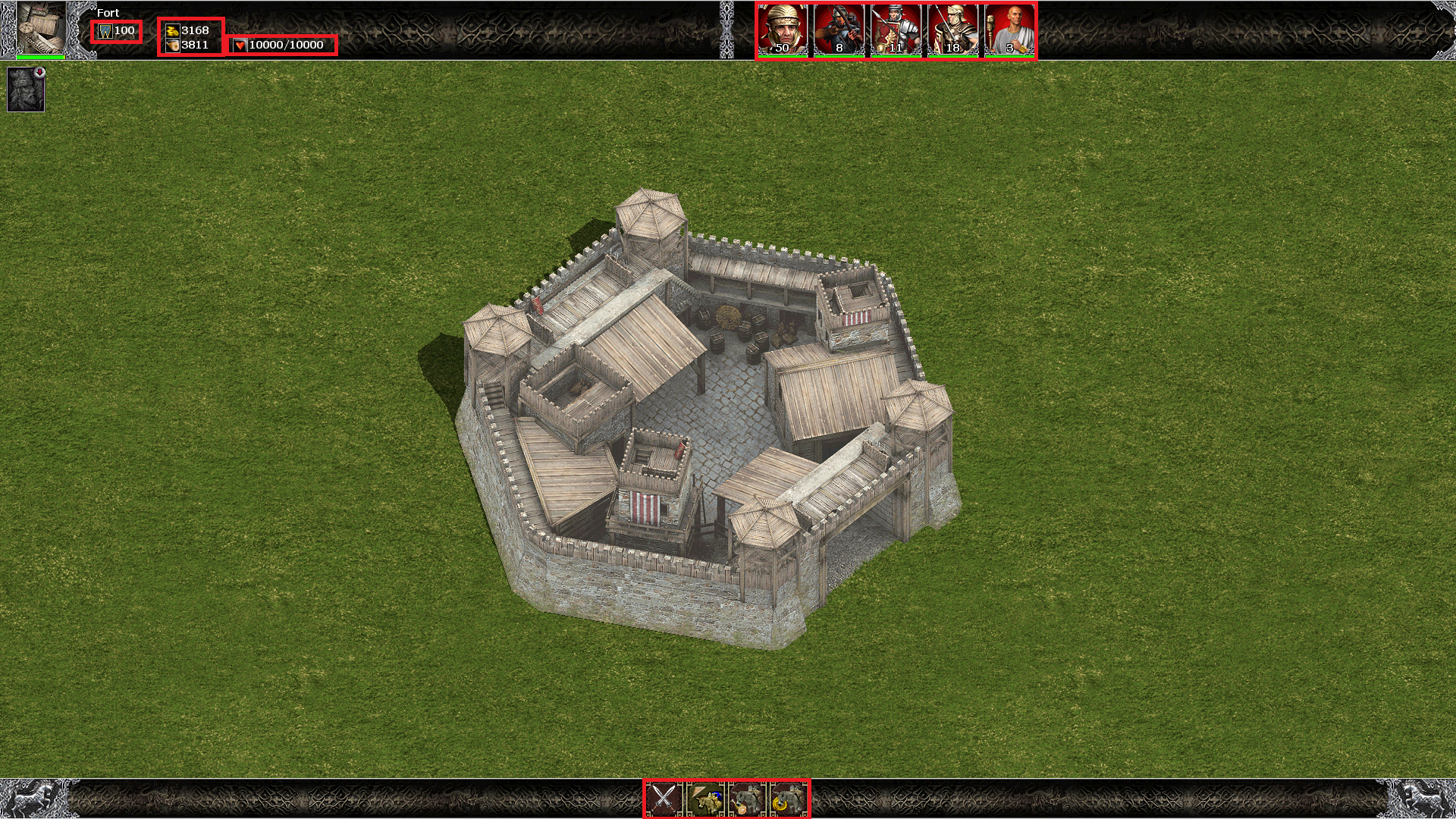
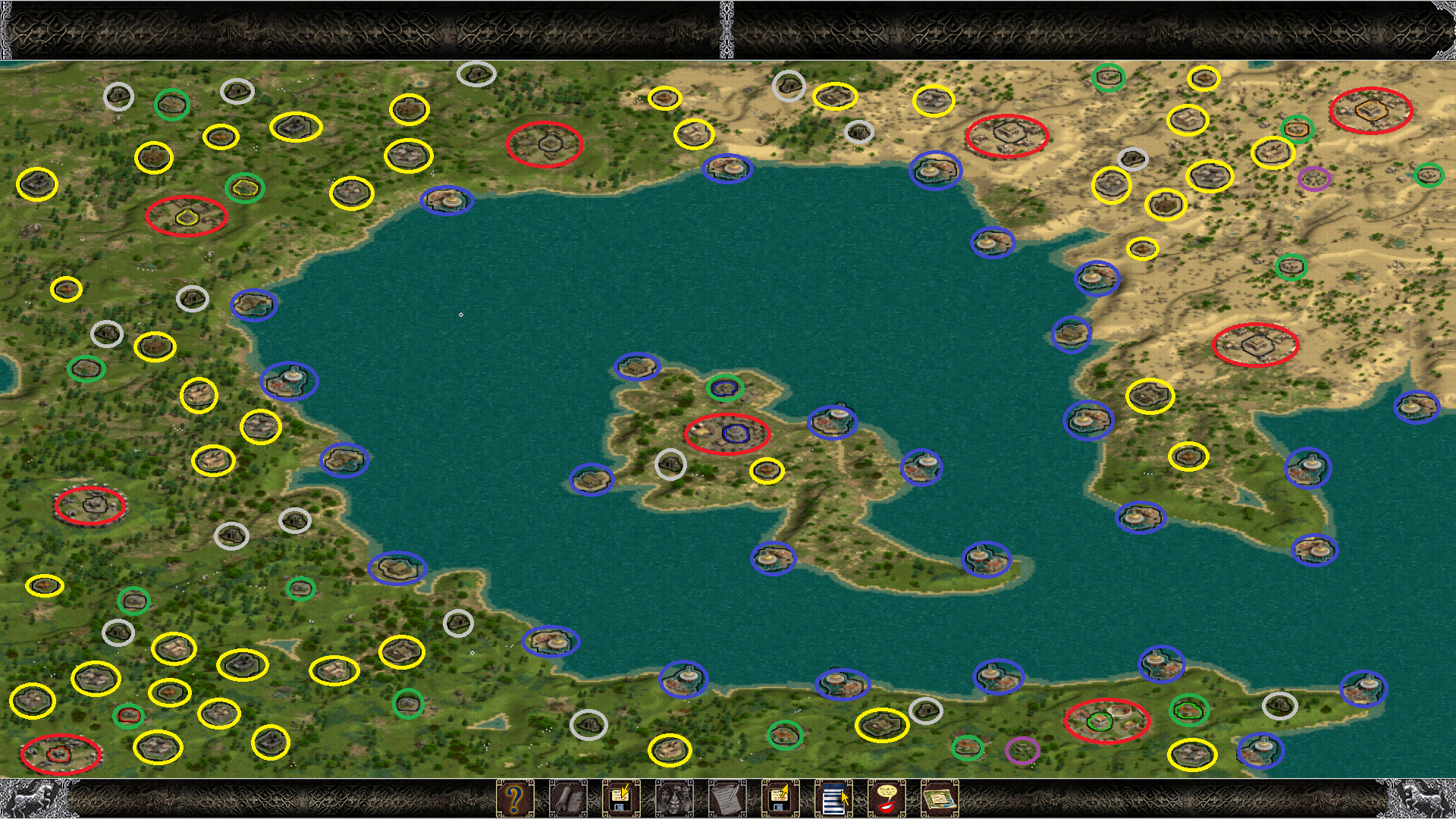
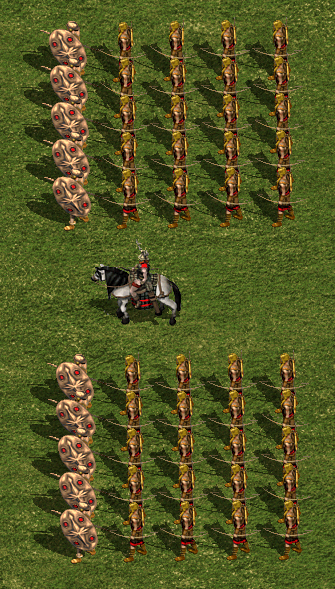
Leave a Reply